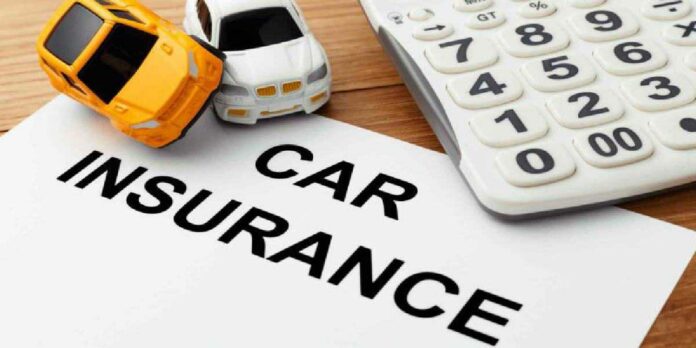Types of car insurance coverage: An auto policy maybe a package of several coverage types. The kinds and amounts of coverage you opt for will depend on your specific situation. If you create an insurance comparison, confirm the identical coverage types and limits are included on each quote, so each company is on a level playing field.
Some common coverage types are:
Bodily injury liability: this could be designed to cover the worth of injuries that you simply cause to a special party in an accident.
Property damage liability: This pays for the damage that you just simply cause to someone else’s property in an at-fault accident, like damage to a special car, a building or holding.
Uninsured motorist and underinsured motorist coverage: These coverages pay for your damages and injuries if you’re hit by a motorist who doesn’t have any insurance or doesn’t have enough insurance to cover your expenses.
Collision: This covers the damages to your car caused by colliding with another vehicle or object.
Comprehensive: Often called “other-than-collision” coverage, this pays for damages to your car caused by a spread of scenarios, including theft, vandalism, storm damage, weather damage and hitting an animal. Adding comprehensive and collision to your policy means you’re purchasing “full coverage.”
Medical payments coverage: This pays for your and your passengers’ medical bills stemming from an accident, regardless of fault. depending on where you reside, it may be mandatory, optional or not available.
Personal injury protection (PIP): This coverage is analogous to medical payments, but also covers lost wages and thus the value to rent someone to do and do tasks if you or a passenger is unable to complete them. it’s often required in no-fault states, could even be optional, or, like medical payments, may not be available betting on where you reside.
Gap insurance: If you have a loan or lease on your vehicle, this coverage pays the difference between your loan amount and thus the depreciated value of your car if it’s totalled.
When comparing car insurance quotes, you will probably want to form sure you’ve requested identical types and amounts of coverage from each company. That way, you’ll more easily see which company can provide a lower premium for the coverage you’d like.
How much insurance do I need?
How much insurance you’d like will depend on your individual needs. You’ll purchase a minimum of the required minimum coverage types and limits in your state to drive legally. However, most insurance experts recommend that you simply just purchase higher liability limits, whether or not you choose a liability-only policy. State minimum limits are often very low and can leave you with high out-of-pocket expenses if you cause an accident and so the damages exceed your insurance limit.
Check Out: Social Security payments scheduled for 2022
If you have got got a loan or lease on your car, your institution will likely require you to have a full coverage policy. whether or not you own your car outright, you’d possibly want to contemplate purchasing full coverage, especially if your vehicle is newer, relatively expensive otherwise you do not have the funds to repair or replace it yourself after an accident.
How to compare car insurance rates
If you’re buying auto insurance, you’ve probably heard that you simply just should compare insurance quotes. Average rates vary between different insurance companies, so shopping around can facilitate your finding a policy that matches your needs, whether or not you’re looking for the foremost cost-effective insurance possible. But what are you looking for? How must you compare auto insurance quotes? How do you know if you’re getting an honest deal?
Factors that affect insurance rates
Your payment is not just supported by which company you decide on. There are numerous other factors that can impact what quantity you buy auto insurance, including:
Age: Your age includes an oversized impact on your insurance premium, with teens paying the foremost. are often} why it is often beneficial for people to insure teenagers, rather than having your teen get their own policy. As you age into your 20s and 30s, insurance rates begin to drop. However, rates may slightly increase again after around 70-years-old.
Gender: Males tend to pay higher rates than females, due to an increased likelihood of stepping into more accidents and more severe accidents. California, Hawaii, Massachusetts, Michigan, Montana, North Carolina and Pennsylvania don’t allow insurance companies to use gender as part to calculate your premium.
Vehicle type: The vehicle you drive is another big factor when it involves what quantity you’ll pay. Some vehicles are cheaper to insure than others.
Credit rating: it should be surprising, but your credit score can impact your premium. Drivers with low credit scores tend to hunt out more claims than drivers with higher scores, so insurance companies charge higher premiums to catch informed the increased risk. Not all states allow credit to be used as a component in determining your rate.
Driving record: If you’ve accidents, tickets or DUI convictions on your record, you will likely pay more for insurance.
Insurance history: Drivers with continuous insurance tend to pay but drivers with lapses in coverage or no insurance history.
Coverages: The coverage and levels of coverage that you simply just choose will raise or lower your premium. Generally, higher levels and more optional coverages will cost more.
Discounts: If you qualify for one or more insurance discounts, you’ll be able to lower your premium.
You may also save cash on an insurance car if you’re married. And if you are a member of the military or a veteran, you will find specialized discounts or coverage options that are more cost-effective.
